As Newton’s third law states, “entropy will always increase on its own”, a statement that also stands true for a Bermuda lawn. Over time, the elements of a Bermuda lawn, especially the grass will be lost to the environment. As a result, your once beautiful Bermuda lawn will start appearing thin, pale, and patchy. When you realize that your Bermuda lawn is thinning too much, it is time to overseed bermuda grass.
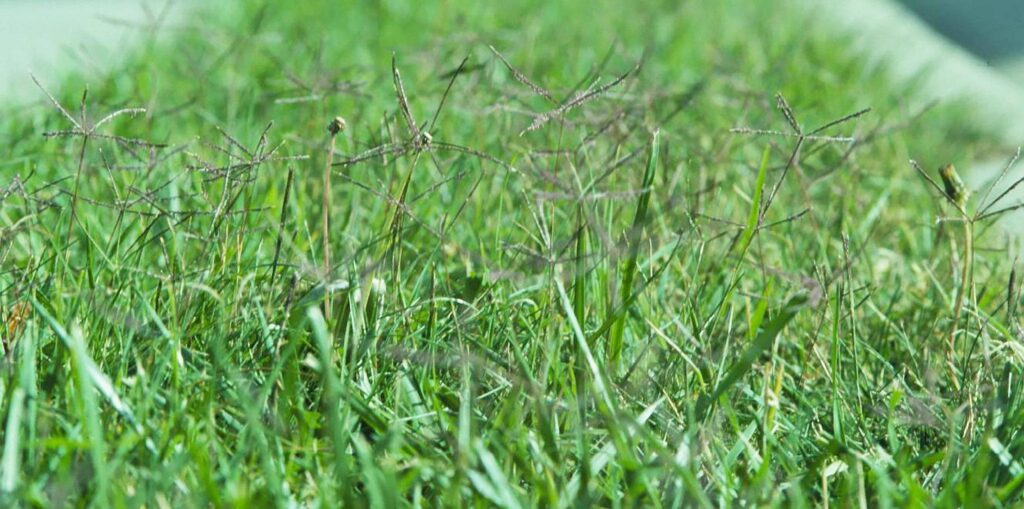
Overseeding dormant bermudagrass lawns ensures a thicker and healthier turf.
Overseeding the Bermuda lawn is simple. Just add Bermuda seeds to the existing Bermuda grass. However, if you want to keep your turf dense and green all year round, you cannot do that. It is because Bermuda grass is a warm-season grass that does not do well in the cold winter months. Also, there is no variety of lawn turf currently available that stay lush and green throughout the year.
To deal with this issue, you will have to choose a cool-season grass or any of the winter grasses. Many turf managers choose annual and perennial ryegrass for overseeding Bermuda grass lawns. An overseeded bermudagrass lawn with annual or perennial ryegrass stays green even in the cold months when Bermuda grass goes dormant.
So, let’s go ahead and find out how to overseed Bermuda lawns correctly and if there are any options other than perennial or annual ryegrass. We will also tell you what is the best time to overseed Bermuda lawns, and is overseeding Bermuda lawns worth it? Happy Reading!
Should You Overseed Bermuda Grass?
In order to keep your lawn lush, green, clean, and serene, you will need to overseed your Bermuda lawn to replace the grass that has been lost to environmental factors over time. Overseeding Bermuda grass will help keep your turf dense and green. When mature, the new Bermuda grass seedlings will fill any bare spots in your yard.
Overseeding Bermuda grass will also ensure that weeds stay out of your lawn. It is because a dense turf on its own is an excellent defense against the pesky weeds which might try and sometimes succeed in taking over a yard.
RELATED: How to Plant Bermuda Grass | Bermuda Grass Growth Stages and Care
When Should I Overseed My Bermuda Lawn?
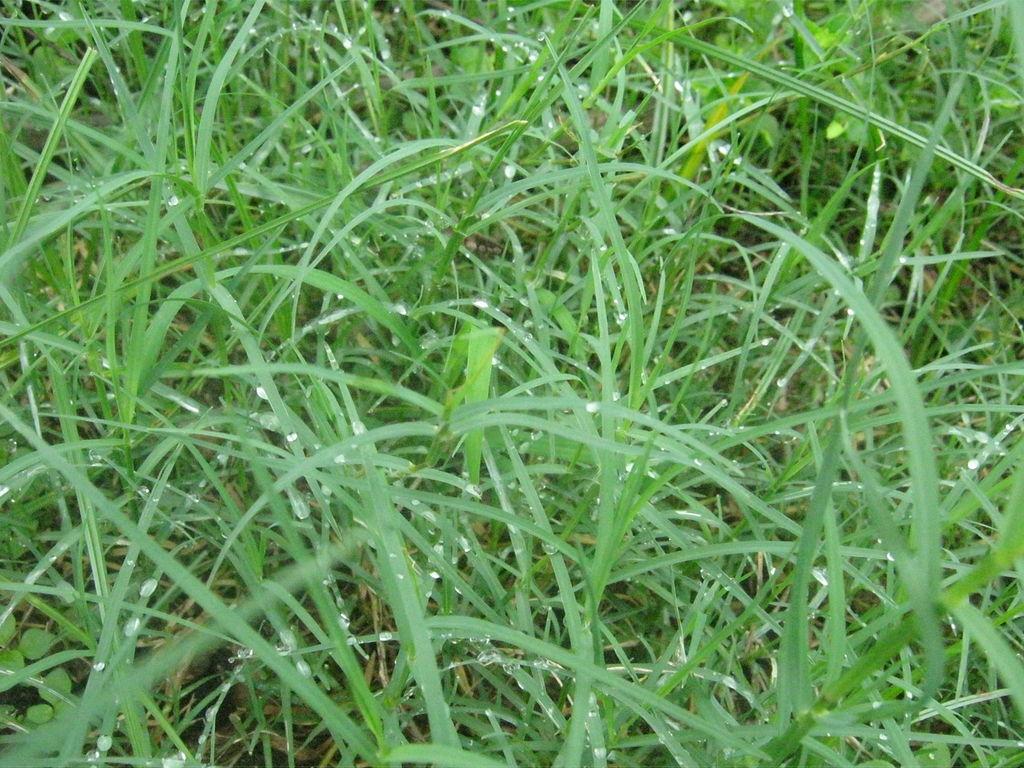
Overseed Bermuda lawns when soil temperatures are around 60 degrees.
Bermuda and other warm-season grasses grow best from late spring through hot summer months. So, the best time to overseed a Bermuda grass lawn will be anywhere between mid-spring and early summer. During these months, the soil temperatures are just right for the grass seed to germinate. Planting Bermuda grass seed after the proper time (mid-spring to early summer) can reduce the germination and growth rate.
For instance, if you plant Bermuda (a warm-season grass) in cold months, frosty conditions will reduce seed germination and kill new seedlings. It is because Bermuda grass lacks cold tolerance, a drawback that also limits its use in the country’s southern states.
The best time to overseed a Bermuda lawn can also vary depending on the variety of grass you will use for the overseeding process. For example, when it comes to overseeding Bermuda with warm-season grasses, mid-spring is the best time to do the job. These days, the seeds will take less than a week to germinate.
However, if you are going to overseed your lawn with a cool-season grass such as ryegrass, the best time is fall or winter. Finally, you should keep in mind that if your Bermuda lawn is less than 90 days old, you should not overseed it. It is the minimum time required for Bermuda to mature and develop a healthy root system.
RELATED: How To Get Bermuda Grass To Spread Fast | Bermuda Grass Lawn Care Tips
What should I overseed Bermuda with?
That depends on what you are planning to do with your lawn. For instance, in home lawns where people mostly want to keep things simple and uniform, overseeding is usually performed using similar Bermuda seeds. However, for turf areas such as parks, pastures, athletic fields, and golf courses where you typically want green grass all year round, mixing Bermuda with other grass types is the way to go. A good grass mix can complement the shortcomings of Bermuda in the winter months, which is at home in warm temperatures. Here’s a list of grasses that you can use for overseeding a Bermuda lawn:
Perennial or Annual Ryegrass
Bermuda goes dormant in the cold, harsh winter months as Bermuda is a warm-season variety of grass. However, you can avoid a landscaping eyesore by overseeding it with cool-season ryegrasses, i.e., perennial and annual ryegrass. Both perennial and annual ryegrass have their own advantages and disadvantages, mentioned in the table below.
Annual Ryegrass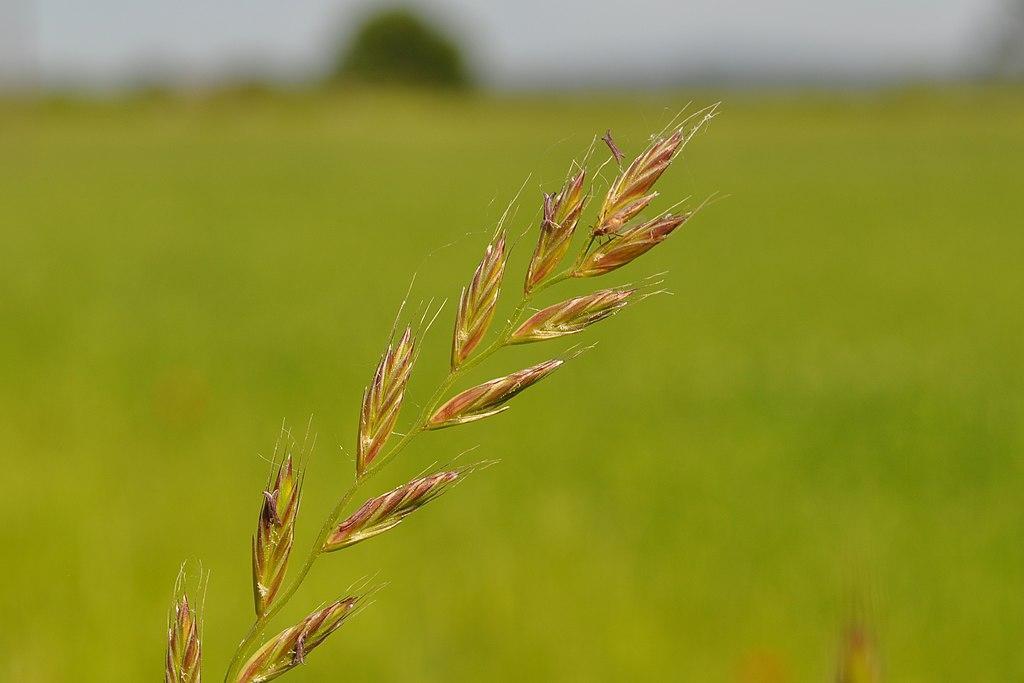 | Perennial Ryegrass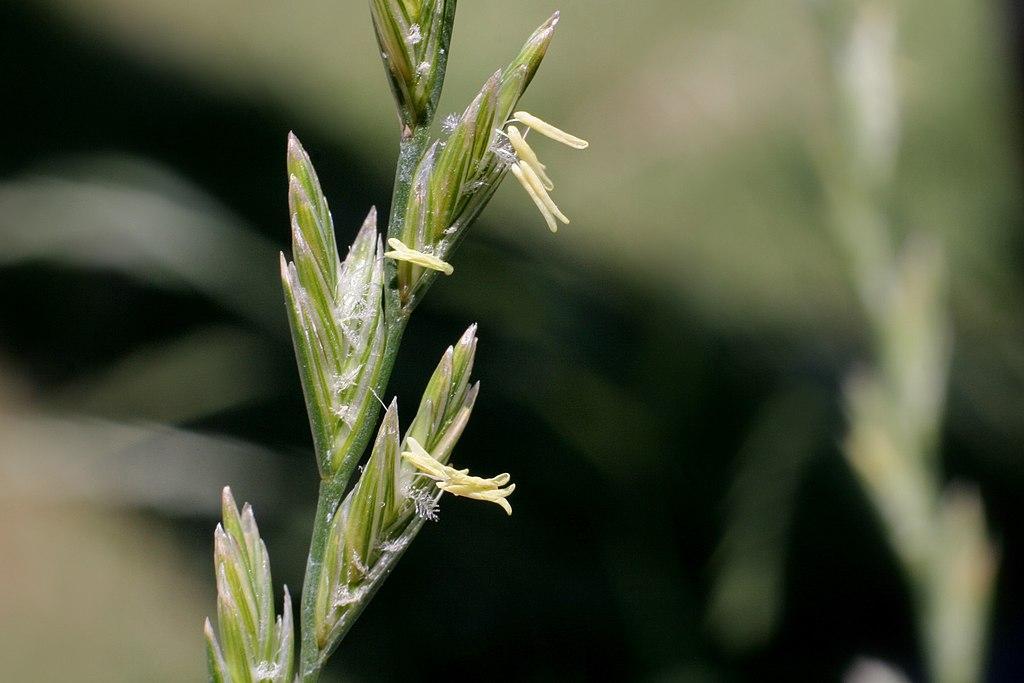 |
| It has a coarse structure | It has a more delicate leaf structure |
| Reaches six inches in height | Reaches almost one foot in height |
| Dies after one season | Remains alive for multiple seasons |
| It has a higher tolerance for cold | It has moderate tolerance for cold |
| Annual ryegrass seeds are very affordable | Perennial ryegrass seeds are expensive |
| Its wear tolerance is slightly higher than perennial | Has moderate wear tolerance |
| Its shade tolerance is slightly higher than perennial | Has moderate shade tolerance |
While planting ryegrass seed, keep an eye out for soil temperature as well. It should be planted when the daytime temperatures are not above 70 degrees, and nighttime temperatures also should not exceed 50 degrees. This typically happens 2 to 4 weeks before the first frost of the winter. Another thing to keep in mind is that the perennial variety of ryegrass is somewhat more heat-resistant than the annual variety. Therefore, it will stay green almost all year if the conditions do not become too extreme. In contrast, the annual type dies as soon as mid-summer approaches.
However, that is not where the differences between these two grass types end. Annual ryegrass grows faster and can cover a large lawn area relatively quickly. Therefore, you can establish a new turf or cover an existing lawn surface much quicker by using the annual variety. However, keep in mind that annual ryegrass is a water guzzler. Therefore, you will have to water your lawn regularly for the first few weeks, or the root development will take a hit.
Hybrid Bermuda Grass

TifWay 419 hybrid Bermuda.
If your turf is thinning out because of wear and heavy foot traffic, you can try overseeding your lawn with a Bermuda grass hybrid. Over the years, several varieties of Bermuda have been admired by experts for turf areas with high foot traffic because of their increased resistance to drought and wear. These varieties include Blackjack Bermuda, TifWay 419, and TifGrand.
In addition to being resilient, some Bermuda hybrids maintain their lush green color even in nutrient-poor soils. They are also more disease and pest resistant than common Bermuda. You can also plant hybrid Bermuda in a yard where you have overseeded in the past with ryegrass or any other turf grass. However, do your research and choose the best hybrid in accordance with your needs.
Fescue Grass

Meadow fescue sweetgrass ear.
You can also use Fescue grass on your lawn. It will keep your Bermuda lawn green even in the cold months of winter when Bermuda goes dormant. One other advantage of using Fescue in your yard is that it starts disappearing when early spring approaches. This reduces the competition with Bermuda, which has begun to grow back by then.
However, while using Fescue on your lawn, you should keep the following things in mind. As opposed to Bermuda, which grows laterally, Fescue grass grows horizontally. Therefore, you will have a problem deciding the optimal mowing height as mowing low helps lateral growth while mowing high improves vertical growth.
Zoysia
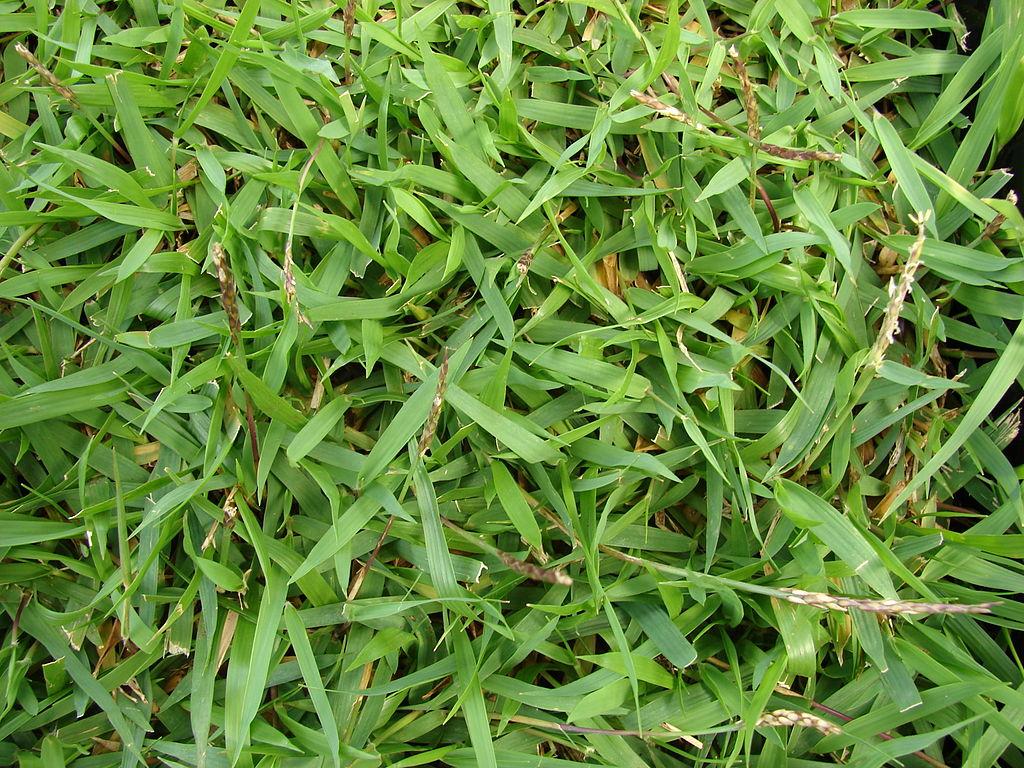
Zoysia grass can be used to overseed Bermuda turfs in areas with shade or dappled sunlight.
Zoysia grass can be used to overseed a Bermuda lawn when it is thinning due to dappled sunlight and shade. Unlike Bermuda, Zoysia grass does not require full sun all day long to grow healthy. It is somewhat shade-tolerant and can grow to its best even with four to five hours of sunlight per day. Moreover, Zoysia is also more resistant to drought and wear than Bermuda.
As compared to Bermuda, its maintenance requirements are also less. So, overseeding your lawn with Zoysia can improve its hardiness in general. However, one disadvantage of using Zoysia grass is that it is more prone to pest infestation.
How Do You Overseed Bermuda Grass?
While overseeding your yard with cool-season grass, the first thing to consider is how long will it take for the new grass to die after being overseeded. It will ensure that your Bermuda does not have to compete with the new turf grass, once the warm season arrives. After you have chosen the suitable grass variety for your yard, go ahead, it is time to seed your lawn. Here’s how you can do it correctly:
- Cut out the use of any pre-emergent herbicides. It is best to stop using the chemical weed killers at least 90 days before overseeding the lawn. This is because the chemicals in herbicides can kill new seedlings or impact the seedling establishment.
- When you overseed your Bermuda lawn, make sure that the soil surface temperature does not exceed more than 70 degrees. It can hinder the development of your new cool-season grass.
- If you want the overseeding process to show the best results, mowing and raking your lawn is crucial. You can use a reel mower to do the job, and we suggest keeping the mowing height to around one inch before seeding.
- After seeding, you should also gently rake your grass. It ensures an excellent seed-to-soil surface contact.
- Uniformly spread the seeds over the grass. Six to eight pounds of seeds should be enough for a thousand square feet lawn. It takes about two weeks for the seedlings to emerge. During that time, proper care and watering are vital for the developing grass.
- Once the new turf has attained a sufficient height, you can start the mowing process again. However, this time set the mowing height to around two inches for the best turf.
Can You Overseed Bermuda Lawn in Fall?
Suppose you are overseeding your bermudagrass lawns with cool-season grasses. In that case, it is perfectly okay to overseed the lawn in the fall. However, make sure you do it early in the fall. It is because right amidst the fall, when the temperature is too low, the germination process can take a severe hit, and you might not get the desired results.
September through the middle of October usually is the best time to overseed the lawn. These days, the temperature is not too hot or not too cold, and the seeds will have a better chance of germinating and surviving later on.
How Long Should I Wait To Mow After Overseeding Bermuda?
Mowing right after you have overseeded your lawn can prevent the new seedlings from properly developing. As such, we recommend that you wait for around two to three weeks before mowing your lawn. To put it another way, you should wait for the turf to reach a height of three to four inches before you first mow the lawn.
Set the mowing height to around one or two inches for the first mow of the season. In general, do not remove one-third of the leaf area with any mowing. It is because leaves are vital to the survival and growth of the grass.
Sources for Further Reading
- Overseeding Bermudagrass. (2022). Retrieved 24 April 2022, from https://turf.arizona.edu/tips894.html
- Overseeding The Bermuda Grass Lawn with the Annual Ryegrass. (2018). Retrieved 24 April 2022, from https://extension.arizona.edu/overseeding-bermudagrass-lawns-annual-ryegrass
- Overseeding Dormant Bermudagrass – Alabama Cooperative Extension System. (2022). Retrieved 24 April 2022, from https://www.aces.edu/blog/topics/lawn-garden/overseeding-dormant-bermudagrass/
Hope you enjoyed reading our overseeding bermuda grass article, make sure to also check out our other articles:
Top 10 Super Easy And Effective Ways Of Fixing A Muddy Yard
Shade Tolerant Grass Species | Which Species Is The Best?
Pros And Cons of Using Straw To Cover Grass Seed In A Newly Seeded Lawn







